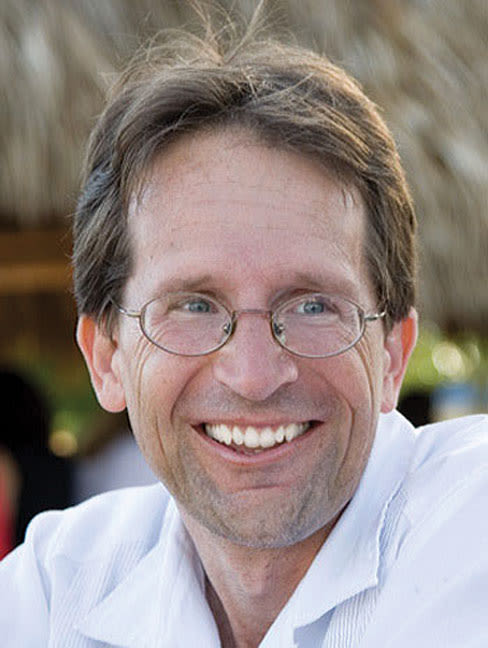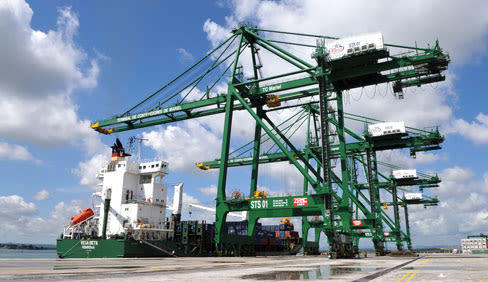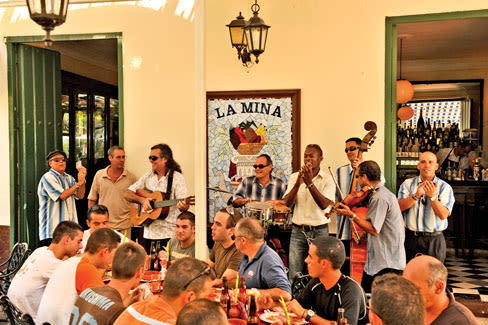Looking to Cuba: Interview with Johannes Werner
Interview by Isaac Eger
The island nation offers opportunities—and risks—for local businesses.

On Dec. 17, 2014, presidents Barack Obama and Raúl Castro announced that the United States and Cuba would seek to normalize relations. U.S. business is clamoring to get in, but risks and uncertainties exist, including the question of whether Congress will maintain trade sanctions. Sarasota’s Johannes Werner, editor and managing partner of cubastandard.com, which provides news and analysis on the country’s economy, talked to Biz(941) about what Cuba might offer Southwest Florida businesses.
Q. What are the main difficulties in doing business with Cuba?
For U.S. businesses, it’s U.S. sanctions. Eased U.S. regulations now allow for the sale of many goods to private-sector buyers in Cuba. This is a realm for pioneering niche players willing and able to cope with red tape and compliance issues. For instance, a pair of Alabama-based startup entrepreneurs have applied for a U.S. license to assemble tractors of a very simple design in Cuba and sell them to private farmers there. That would probably just be a few hundred tractors per year in the beginning. They may not get that license; we don’t know whether and how the sanctions enforcers in Washington will act on that. Meanwhile, Caterpillar would like to sell heavy equipment in Cuba, but they can’t, because essentially all construction and mining companies are state-owned.
Q: What happens once you clear U.S. hurdles?
Then you need to convince the Cuban government that what you have to offer will be beneficial for Cuba, and that you’re a reliable company. They’ve had their share of bad experiences with carpetbaggers in the 1990s when Cuba first opened up to foreign investment. The remaining hurdles are red tape, lack of buying power among Cuban consumers, and the tendency towards improvisation in the face of lack of access to hard currency, regular flows of supplies and underpaid employees.
Q. Should U.S. businesses take a wait-and-see approach then?
U.S. businesses would like to go but can’t, and European, Canadian and Asian businesses are pushing hard right now to have something in place when the gringo invasion comes. That’s why you see Cuba’s economy performing very well this year. Investments are beginning to flow. It’s going to be a tsunami from all the pent-up demand in the U.S. Any entrepreneur could figure out something they could do in the mid-term and long term in Cuba. They better look at it now because it’s going to change very fast and the entry ticket is going to be more expensive in the course of the years.
Q. How many Southwest Florida companies already do business with Cuba?
About half a dozen companies in the Tampa Bay area have done actual business transactions with Cuba. Strickland Ranch, one of the bigger ranches in Manatee County, has sold cattle to Cuba. And then you have a handful of individuals who organize travel tours, and there are licensed travel companies in this area.
Q. What role does Port Manatee play in this new climate?
The ferry business [to and from Cuba] is in the making, and Port Manatee is one of the prime candidates to host the service. It’s the port nearest to Havana in the continental United States and the closest port to Mariel, which is the big container hub developing in Cuba. [Orlando’s] United Caribbean Lines is seriously considering Port Manatee as a base, and Havana Ferry Partners [out of Fort Lauderdale] has announced it will move its offices to Port Manatee, which is the equivalent of a commitment. Whether they will get the permits from the Cuban government is a separate question. The Cubans may want to keep the number of ferry operators very limited as they are ramping up their infrastructure.
Q. Can we expect cargo to Cuba from Port Manatee?
The ferries carry people, but they also carry cargo. Neither cargo nor cars are possible in the beginning, but over time that will happen.
Q. What about air travel?
Existing flights from Tampa, Orlando and Miami are flourishing and that market is set to grow. Cuban visitor growth [internationally] has been sensational this year. In May, the most recent numbers rose 21 percent from a year ago. Total cumulative growth for the first five months is a record 15.3 percent. This is [mostly] from Canadians, Europeans and other Latin Americans. Privately owned Cuban mom-and-pop businesses are beginning to make serious money with bed and breakfasts, casas particulares, restaurants and so on. Revenues of Cuban state-operated companies that offer tourism-related service dropped 4 percent. The real growth hasn’t really started yet, so there’s a lot to be gained from flights from Tampa.
[caption id="attachment_9666" align="alignnone" width="488"]

[Port of Mariel, a big container hub, is the closest Cuban port to Port Manatee.][/caption]Q. What about Sarasota Bradenton International Airport?
Right now, the big airports—Tampa, Orlando, and Miami—are vying over these Cuba flights. But in the long term, there’s going to be space for Southwest Florida International Airport, Sarasota and Fort Lauderdale to get into Cuba flights because the bigger airports are going to see this business as peanuts.
Q. What Cuban industries have the most potential for the U.S. market?
Cuba is beginning to flourish in the tech realm. They are cranking out more than 5,500 IT workers every year despite having very limited access to the Internet. Then you have the U.S. allowing business within the private sector. For instance, my company, Cuba Standard, is contracting Cuban web designers to redesign our websites in Cuba. Communication is not easy, and I wonder how they get all this stuff done, but their ideas and suggestions are phenomenal.
Q. Sarasota and Manatee don’t have the historical ties or Cuban immigrant population of cities like Tampa and Miami. How will Cuba notice us?
One prime example is extremely visible. That is Ariel Serrano and his wife, Wilmian Hernandez, who are running the Cuban Ballet School in Sarasota. Eight of the biggest Cuban ballet talents, teenagers, are being sent by the National Academy of Ballet in Cuba to learn with Serrano here over the summer. This is quite amazing. Cuba entrusts some of its biggest talents with a guy who defected in the 1990s and started his own ballet school here. It’s a political signal. In Cuba, ballet is as important to female Cubans as boxing is to men. I would argue that Sarasota can’t play that big enough if they want to do business with Cuba.
Q. What’s the best way for a U.S. citizen to travel to Cuba?
The U.S. government has 12 categories under which you can travel and it includes everything except having fun. You’re not allowed to be a tourist. You can do anything else. You don’t have to apply for a license anymore in D.C., and oodles of companies are offering travel to Cuba. It is easy to go [but] you must have a paper trail in case a U.S. official asks you for one upon return. As long as you keep some kind of a diary about whatever research you were doing you’ll be fine.
Q. What about business travel?
If you’re a Hilton, a Carnival or a giant corporation, you cannot exercise your business in a full-blown way. You cannot invest in Cuba, you cannot provide tourism services—that’s not possible yet. But Airbnb, based in San Francisco, has set up Cuba as one of its fastest-growing markets. Airbnb can do this because they don’t need any infrastructure. They sit in San Francisco and make money without any representation in Havana. If you’re Hilton, you need bricks and mortar or franchisees. But an online company can list Cuban properties on its website and make revenue.
Q. How is Cuba Standard capitalizing on the changes?
The intent for us is to become active in a variety of different areas, not just in the publishing and selling of information, but also providing travel to Cuba. We are getting into the conference business. We are offering our first business-familiarization tour in November. We are offering 15 spots; we want to keep it small to allow face-to-face interaction with Cuban officials and foreign business people who are already embedded in Cuba. Details to come.

Cuba By the Numbers
11.3 million
Total Cuban population
5,500
No. of IT engineers who graduate from Cuban universities each year; one-third have earned master’s or doctoral degrees.
100
Percent of Cubans who are literate
1.17
Percent of GDP invested in tech research and development (U.S. public sector invests less than .9 percent of GDP in this category.)
47
No. of universities
5,000
Number of Cubans employed in high-tech industry, most in poorly paid government jobs
$25
Average monthly salary of Cuban worker
1.7 million
Number of visitors to Cuba, Jan.-May 2015, a 15 percent jump from the same period the previous year